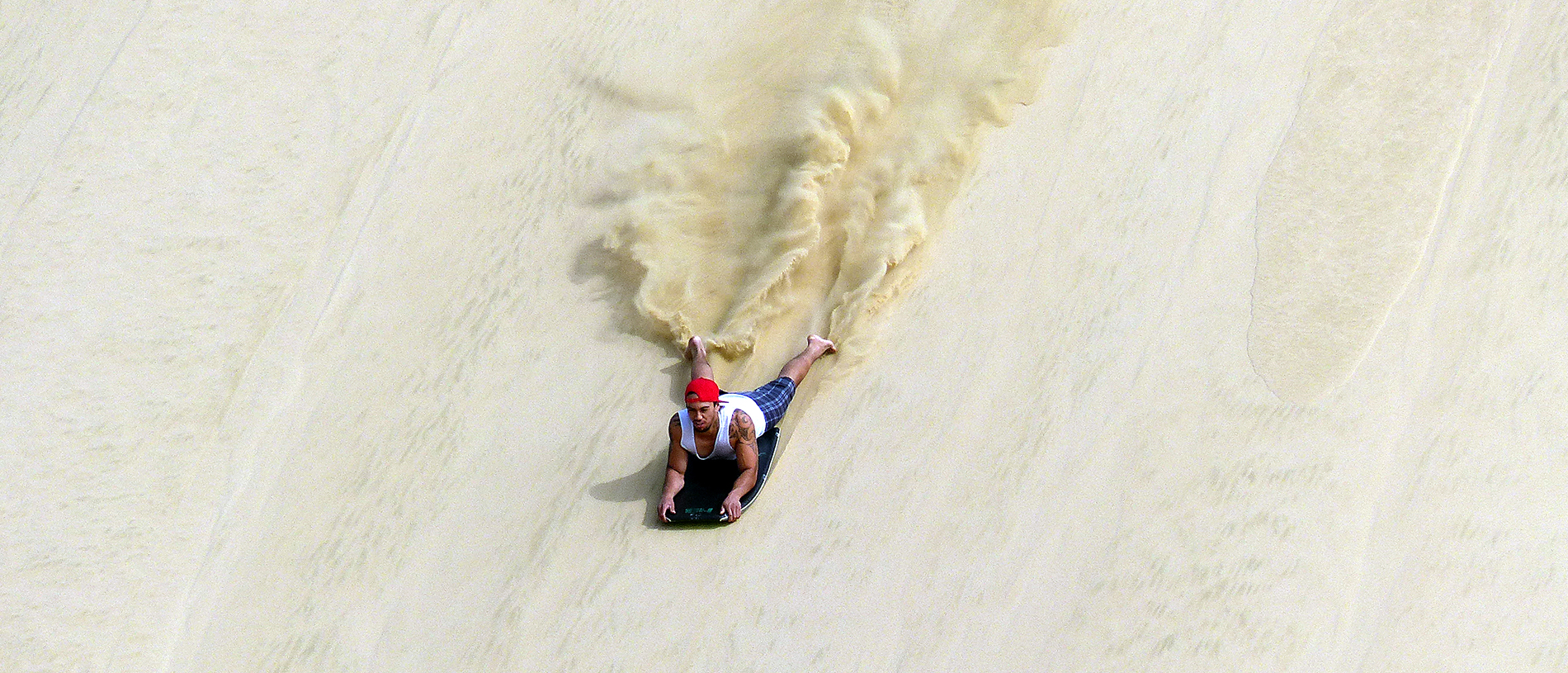
The Far North: the tail of the fish
North of the Bay of Islands, things get a little wilder. This is Muriwhenua, the tail of Māui’s legendary fish, the northernmost tip of the country.

The rain had settled in. Mist crept over the brows of hills, brooding and moody. Not the most auspicious start to our road trip, but we cruise up the Brynderwyns regardless, stately and elevated in our campervan.
I am pleased to be fulfilling a childhood dream of travelling like a snail – taking my home with me wherever I go.
In Whangārei, the holiday park at the foot of Mt Parihaka is shrouded in sheets of rain. Outside in the dusk children wrapped in blankets splash barefoot through puddles.
Whangārei Native Bird Recovery Centre was founded by Robert and Robyn Webb in 1992 after years of caring for injured birds in their home. They care for all birds, native or not, and where possible, rehabilitate and release them back into the wild.
A volunteer shows us a male pūkeko, only a few weeks old.
He carefully plants his oversized, spindly feet as he squawks and pecks his way around the deck and flattens his tiny body in bliss when I scratch his downy black neck, only just starting to turn that rich, royal blue.
Whangārei also boasts the best transformation of a landscape scar. The Quarry Arts centre has a ramshackle spirit and draughty buildings, but it’s a gem of a place. The legacy of the late Yvonne Rust QSM, talented potter and teacher, the centre sprawls in a decommissioned quarry; machinery remnants still peek out from bush clinging to the cliffs. Below, mostly wooden buildings house artists’ studios, the Yvonne Rust Gallery, a craft co-op and art groups’ clubrooms.
It’s people that enrich the place. An ex-commercial fisherman makes three-string guitars from cigar boxes in the tradition of African-American slaves in the 1800s; the ex-teacher who took up woodturning because he wanted to do something “besides golfing and fishing.”
Helen Hughes is an ebullient sculptor who first came to The Quarry from Tauranga for a summer course in 1992. “It was 10 days camping here, full immersion,” she fondly recalls. She moved to Whangarei in 1997 and has been involved with the centre ever since.
Heading north and then west on SH12, accompanied by the rattle of cutlery and crash of pots whenever we round a corner, it’s time to stretch our legs.
The Pou Herenga Tai Twin Coast Cycle Trail is 84km long and links the coastal towns of Horeke in the west and Ōpua in the east. We trial the 14km stretch between Kaikohe and Ōkaihau. Our tyres scrunch as we pass several carved pou (poles) marking the beginning of the track and follow it past gorse, thistle and newly planted natives. We ride through avenues of green, rolling farmland and past a sculptural procession of tree trunks, having mock races, talking endlessly about life and greeting others on the track. I find cycling through a rail tunnel delightfully disorienting with the curve, the loss of light, the echo. A hawk flies overhead as we near Lake Ōmāpere; cycling back, the rain is horizontal.
Afterwards, a soak at Ngāwhā Springs is blissful.
We head straight for The Doctor, an ash-black pool of bracing heat and stay until we are prune-like. A local advises me to finish off in the Bulldog pool, as its waters will clean off most of the signature mineral smell. He warns it’s the hottest, but I persist and it is worth it.
We have kiwi spotting on our wish list and the Kauri Coast Top 10 holiday park runs a guided night walk through Trounson Kauri Park, a 450-hectare ‘mainland island,’ where predators are controlled to protect the native flora and fauna. On the tour we see kauri of all sizes, an eel eating cheese, glowworms, kauri snails and giant weta (and I mean giant).
Happily, luck is on our side. A male kiwi forages, so intent on eating that he either doesn’t notice or doesn’t care that 20 people are breathlessly following his every move. With a peculiar rolling waddle, he climbs over branches and around bushes, plunging his beak deep into layers of leaves to dig out wriggling pieces of dinner.
I grin, delighted to see an icon made flesh and my first kiwi in the wild.
Story by Mary de Ruyter.